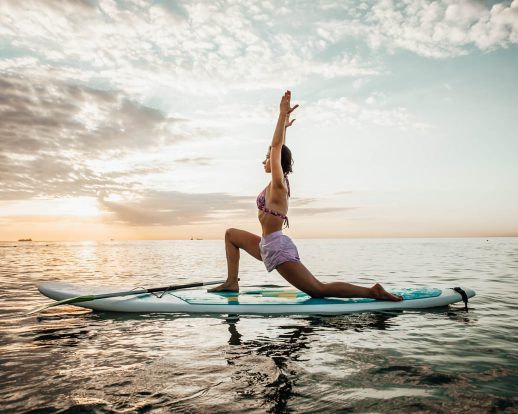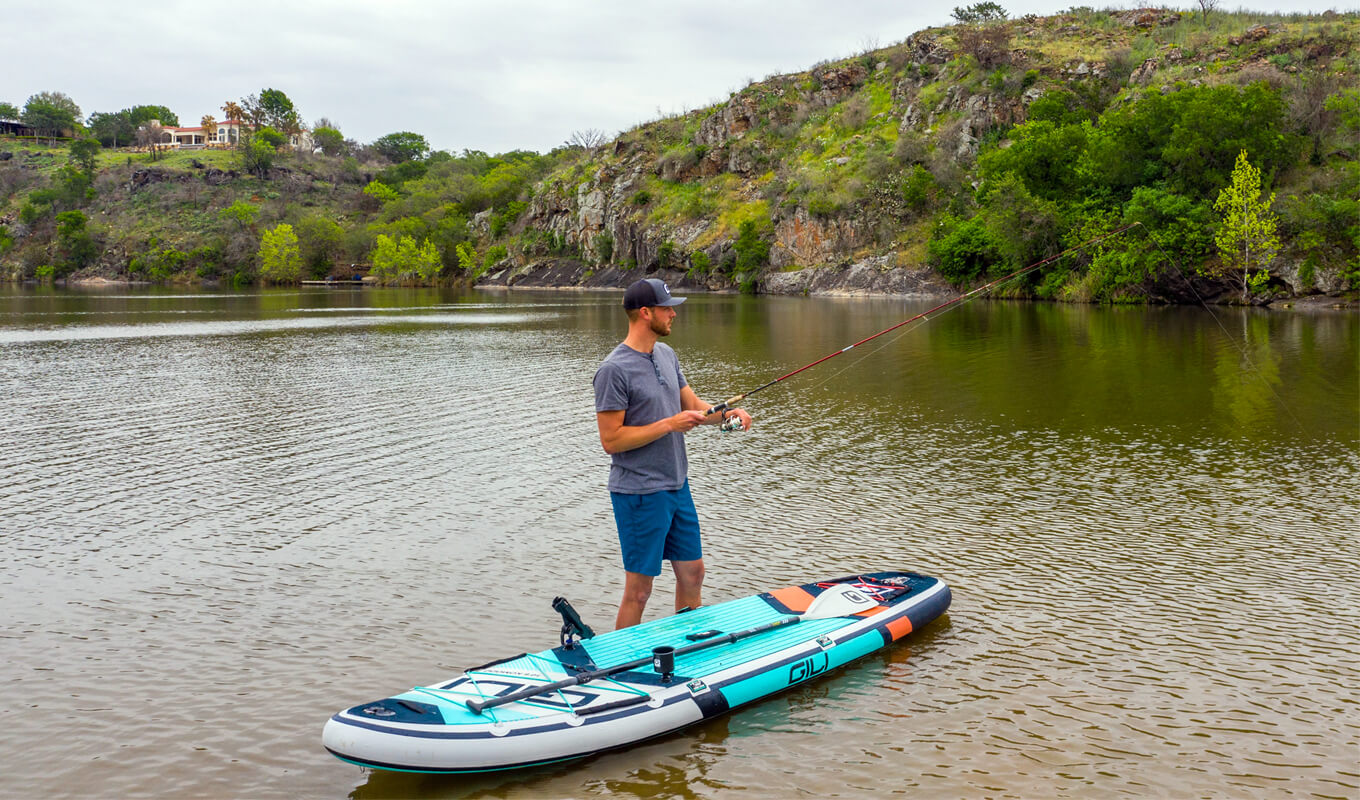
- Alabama
- Alaska
- Arizona
- Arkansas
- California
- Colorado
- Connecticut
- Delaware
- Florida
- Georgia
- Hawaii
- Idaho
- Illinois
- Indiana
- Iowa
- Kansas
- Kentucky
- Louisiana
- Maine
- Maryland
- Massachusetts
- Michigan
- Minnesota
- Mississippi
- Missouri
- Montana
- Nebraska
- Nevada
- New Hampshire
- New Jersey
- New Mexico
- New York
- North Carolina
- North Dakota
- Ohio
- Oklahoma
- Oregon
- Pennsylvania
- Rhode Island
- South Carolina
- South Dakota
- Tennessee
- Texas
- Utah
- Vermont
- Virginia
- Washington
- West Virginia
- Wisconsin
- Wyoming
What Is SUP Yoga And Why You Should Be Doing It
SUP Yoga
Amit Ray, a yoga expert, wrote: "Yoga is not just repetition of few postures - it is more about the exploration and discovery of the subtle energies of life." Paddleboarding is an ideal workout, especially if you are interested in yoga. Recent updates have seen a combination of paddleboarding with stand-up paddleboard yoga, commonly known as SUP yoga, allowing you to relax on your board. SUP yoga originated in Hawaii's surfing community in the 1960s.
SUP yoga has increased in popularity as a water sport in recent years courtesy of its benefits.
The game allows yogis to improve their skills by working on balance, strength, and focus. SUP yoga is like a wave in the ocean - it requires a strong core and flexibility to navigate it, and once you have mastered it, you can reap the rewards that come with it.
Read on to learn more about SUP yoga and why you should be doing it.
What Is SUP Yoga?
SUP yoga is a water sport that combines paddle boarding and yoga on calm bodies like bays, harbors, or lakes. The practice challenges you to balance and focus your mind while floating on the water amidst the waves and wind. The workout is challenging but elegant for riders.
SUP yoga entails additional flows like hatha and vinyasa, which need unique adjustments that you may not be conversant with if you are used to yoga on land only. In SUP yoga, your paddle board is your mat, and you must adjust accordingly to balance the board movement. The workout gives yoga a new experience, and it is no wonder it is becoming popular. For instance, while you are used to grounding in one place when doing yoga on land, you will be on the move while doing SUP yoga.
With the above restrictions, SUP yoga requires the participant to maintain focus and balance when transitioning or holding poses. Eventually, you will refine your techniques and reap physical benefits.
Who Can Do SUP Yoga?
SUP yoga is for everyone who wants to improve their balance skills while adventurously working on their main muscles. Whether a beginner or veteran, you can enjoy the game after a demanding work schedule to relieve your mind and body.
What You'll Need for SUP Yoga Preparing for SUP yoga requires you to have the right gear. If you are a beginner, confirm if your class will provide a paddleboard or if you will bring yours. You can also consider renting a paddleboard if your course does not offer one. Wearing the proper clothing, including sports and swimwear, is highly advisable, and they should be supportive and comfortable as you can fall in the water.
Having a life jacket to remain safe while doing SUP yoga would be best. Keeping a contact address of one or two is also ideal. You can write this contact on your board or keep it in your dry bag in case of unfortunate events.While you will enjoy the breeze at the lake, protecting your skin by wearing sunscreen and hydrating is advisable, as SUP yoga is an outdoor activity. It would be best to protect your eyes using sunglasses with polarized lenses. These sunglasses minimize reflections and glare andprotect your eyes from harmful damage caused by UV rays.
SUP YOGA
Main Benefits
Exercising comes with many health benefits, and even more with SUP yoga. Combining paddle boarding and yoga allows for fun and relaxation for an enjoyable experience. Participating in the sport for up to 30 minutes daily will enable you to reap the following benefits:
Full Body Workout
Doing yoga on a paddle board is enough workout to burn lots of calories. During SUP yoga, you will do targeted yoga poses while balancing on the floating panel. Paddleboarding allows you to work out forgotten muscles, such as the core, upper body, and legs, without you noticing. On the other hand, SUP yoga allows you to practice yoga while being mindful of your muscles and breathing.
Strengthens New Muscles
SUP yoga, unlike yoga on land, is on an unstable surface. The instability of water will challenge your central nervous system such that it will engage and recruit more muscle fibers due to the need to tense and balance your muscles. This action strengthens your stabilizer muscles and works out muscles you did not know existed.
If you have a preferred way of doing your poses, SUP yoga will bring those muscles to attention and, in the long run, strengthen your underutilized and weak muscles.
Increases Your Balance
Unlike all-around paddle boards, yoga paddle boards are stable. However, they are an unstable surface when practicing yoga. SUP yoga, therefore, challenges your balance. The instability on the water makes yoga techniques on land more challenging, forcing your body to adapt to the flux by improving balance. Almost all poses in SUP require balance depending on the water conditions. The benefits of SUP yoga in harmony apply when practicing and in daily life.
Increases Breath Control
Practicing yoga focuses on your breath by enabling you to change positions while holding longer poses. After mastering this technique on land and water, you can use it in all aspects of your life.
Relieves Stress
Life post-pandemic is stressful for most people, and finding an activity that can relieve stress is life-changing. The connection between stress reduction and yoga is clear. By engaging in SUP yoga, you will reduce most of your stress, depression, and anxiety. SUP yoga enables you to take your sessions into nature. Being out on the water and inhaling the fresh air calms your mind and body, improving your mood. Even better, doing yoga sessions on the water will relax
your mind.
Improves Your Focus
Focus is critical to a healthy and happier life. Yoga challenges you to be present, and while this training is difficult, it is possible in the end, allowing you to be present and mindful. SUP yoga gives a whole new experience as you focus on balancing. If your mind starts wandering, you will fall off the board. Therefore, if you find it challenging to remain focused in real-time, SUP yoga is the ideal activity.
Conclusion
SUP yoga allows beginners and veterans to practice yoga on the water. Participants can reap amazing physical and mental health benefits, including improved focus, reduced stress, increased strength, balance, and strength in new muscles. Whether you practice yoga alone or with your friends or class, prepare accordingly and carry the right gear to ensure your safety while on the water. The more comfortable and stable you are, the higher your chances of
realizing the benefits of SUP yoga.



![Paddle to the Top: The Top SUP Brands of All Time [2026]](https://shared-bucket-websites.s3.amazonaws.com/BestInflatableSUPBrands-1656467170812)







